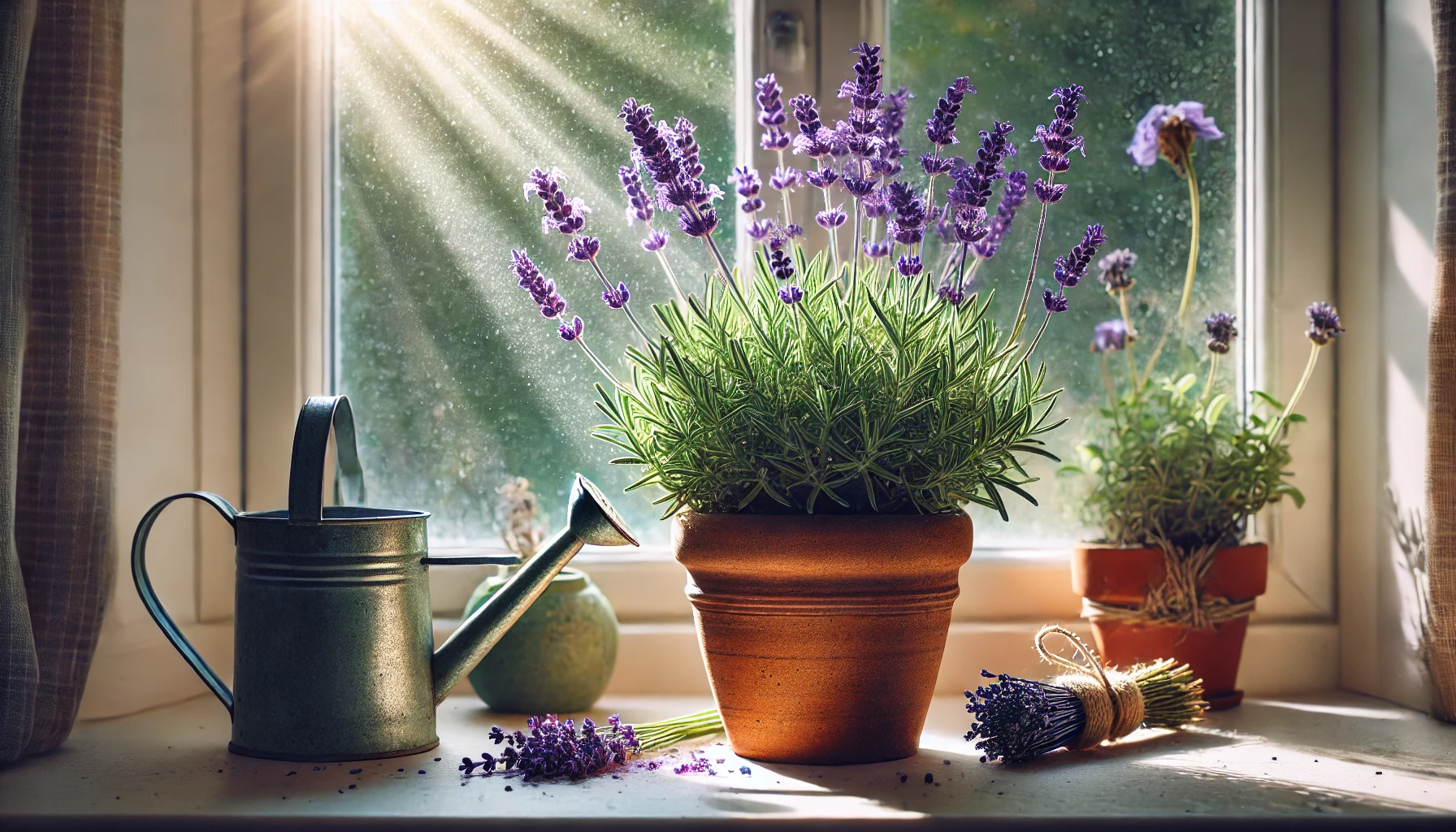Lavender is a beautiful, fragrant herb known for its calming scent and medicinal properties. While it thrives outdoors, growing lavender indoors is possible with the right conditions. This guide will help you successfully cultivate and care for lavender inside your home, ensuring a steady supply of fresh, aromatic blooms year-round.
1. Why Grow Lavender Indoors?
Growing lavender indoors offers several benefits:
- Fragrant air freshener – Naturally scents your home.
- Aesthetic appeal – Adds beauty to any room with its purple blooms.
- Herbal benefits – Used for relaxation, teas, and skincare.
- Year-round availability – Enjoy lavender even in colder climates.
2. Choosing the Right Type of Lavender
Not all lavender varieties grow well indoors. The best types for container gardening include:
- French Lavender (Lavandula dentata) – Compact, blooms year-round, tolerates humidity.
- English Lavender (Lavandula angustifolia) – Classic scent, prefers cooler temperatures.
- Spanish Lavender (Lavandula stoechas) – Unique “butterfly-like” flowers, thrives in pots.
- Lavandin (Lavandula × intermedia) – Hybrid with strong fragrance and rapid growth.
For indoor growing, French Lavender is the best choice due to its adaptability to containers and frequent blooming.
3. Selecting the Right Pot and Soil
Choosing the Best Pot
- Use a 12–16 inch container with drainage holes to prevent root rot.
- Terracotta or clay pots work best as they absorb excess moisture and keep roots dry.
Best Soil for Lavender
- Use a light, well-draining potting mix formulated for herbs or succulents.
- Mix in sand, perlite, or small gravel to improve aeration.
- Avoid moisture-retaining soils, as lavender roots dislike excessive water.
4. Providing the Right Light Conditions
Lavender requires a lot of sunlight to thrive indoors.
- Place the pot in a south- or west-facing window where it gets 6–8 hours of direct sunlight daily.
- If natural light is insufficient, supplement with a full-spectrum LED grow light for at least 12–14 hours per day.
- Rotate the pot weekly to ensure even light exposure and prevent leggy growth.
5. Watering and Humidity Needs
Lavender is drought-tolerant and prefers dry conditions.
- Water only when the top 1–2 inches of soil are completely dry.
- Use the “soak and dry” method – water deeply, then allow the soil to dry out before watering again.
- Avoid overwatering, as lavender hates wet roots and is prone to root rot.
- Keep indoor humidity levels low – lavender prefers dry air.
6. Temperature and Air Circulation
Lavender thrives in warm temperatures and good airflow.
- Keep the temperature between 65–75°F (18–24°C) during the day.
- At night, lavender can tolerate temperatures as low as 50°F (10°C).
- Avoid placing lavender near heaters, air conditioners, or humidifiers.
- Ensure good air circulation with an open window or a small fan to prevent mold growth.
7. Fertilizing for Healthy Growth
Lavender is a light feeder and does not need heavy fertilization.
- Use a diluted organic fertilizer (such as fish emulsion or compost tea) once every 4–6 weeks during spring and summer.
- Avoid high-nitrogen fertilizers, which can lead to weak, leggy growth.
8. Pruning and Harvesting Lavender
Regular pruning keeps lavender bushy and encourages blooming.
How to Prune Lavender for Best Growth
- Trim back one-third of the plant after flowering to promote new growth.
- Remove dead or leggy stems to maintain a compact shape.
- Cut stems just above a leaf node to encourage branching.
Harvesting Lavender for Use
- Snip flower stems when buds are just beginning to open for the most potent fragrance.
- Dry flowers by hanging small bunches upside down in a cool, dry place.
- Store dried lavender in an airtight container for teas, sachets, or skincare products.
9. Common Problems and How to Fix Them
1. Yellowing Leaves
Cause: Overwatering or poor drainage.
Solution: Allow soil to dry completely before watering again and use a well-draining mix.
2. Leggy Growth
Cause: Not enough sunlight.
Solution: Move to a sunnier location or supplement with grow lights.
3. No Flowers
Cause: Lack of light or excessive nitrogen.
Solution: Increase sunlight exposure and reduce fertilizer use.
4. Mold or Root Rot
Cause: High humidity or overwatering.
Solution: Improve air circulation and ensure the pot has proper drainage.
10. Propagating Lavender for More Plants
Lavender is best propagated through cuttings rather than seeds.
How to Propagate Lavender from Cuttings
- Cut a 4–6 inch stem from a healthy plant.
- Remove the lower leaves and dip the stem in rooting hormone.
- Plant the cutting in a small pot with well-draining soil.
- Keep the soil lightly moist and place the pot in bright, indirect light.
- After 4–6 weeks, roots should develop, and the plant can be transferred to a larger pot.
11. Companion Plants for Lavender
Lavender pairs well with other Mediterranean herbs:
- Rosemary – Similar light and watering needs.
- Thyme – Thrives in dry soil conditions like lavender.
- Sage – Complements lavender in both growth and fragrance.
Avoid pairing lavender with moisture-loving herbs like mint or basil, as their watering needs are different.
12. Using Fresh and Dried Lavender
Lavender is a versatile herb with many uses:
- Aromatherapy – Place dried lavender in sachets or pillows for relaxation.
- Tea and Infusions – Brew lavender flowers for a calming herbal tea.
- Cooking – Use in desserts, honey, and herb blends.
- Skincare – Add to homemade bath salts, oils, and face masks.
Final Thoughts
Growing lavender indoors is a rewarding experience, providing beauty, fragrance, and practical benefits. By following these care tips, you can cultivate a healthy lavender plant that fills your home with its relaxing scent and versatile uses.

